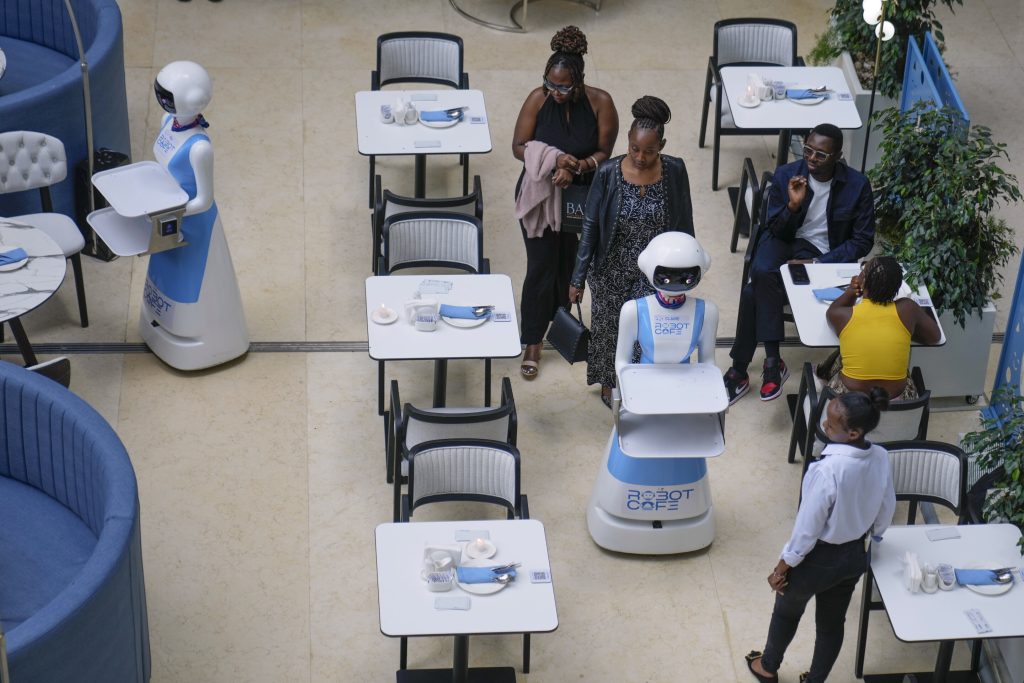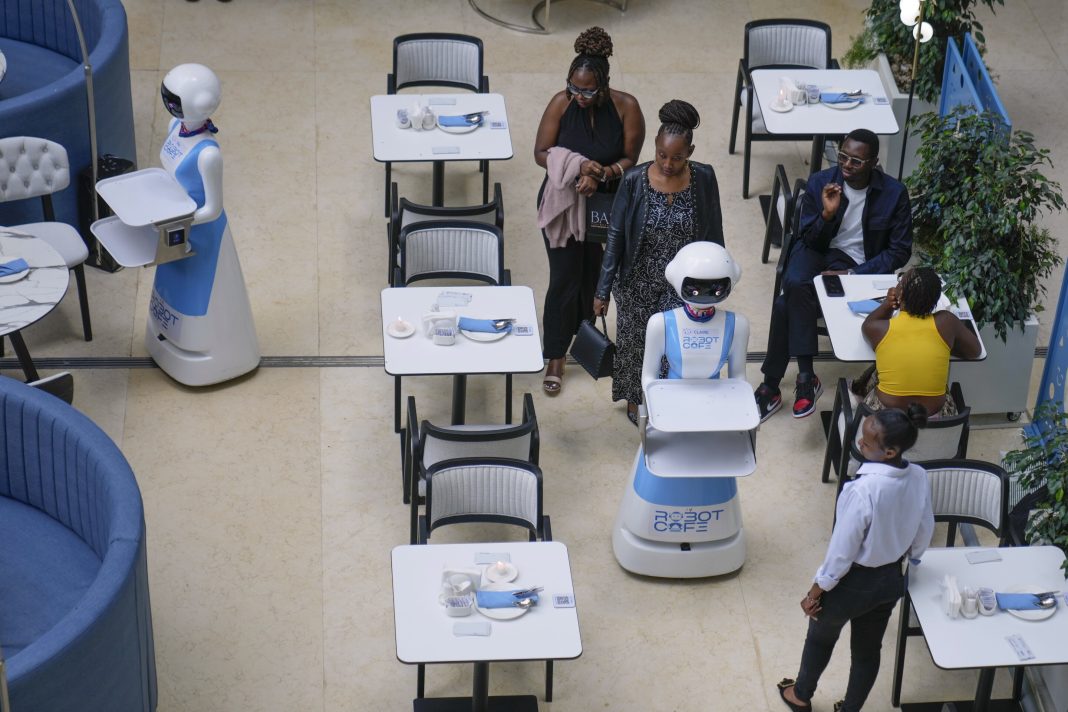Nadia and Claire are the robots that work at this new restaurant in Nairobi.
In the two months since the establishment opened, they have become a local celebrity as they deftly move between tables to deliver orders.
“We can become quite busy at times. especially on the weekends. We therefore have three robots and ten waiters on the floor when the house is full. According to waitress Gladys Guda, “These robots are our coworkers; they have names, assist us with service, and their service is excellent.
At the table, customers scan a QR code to access the menu and place an online order. A bell signals when the food is ready, and a human waiter puts it on a robot’s tray.
Then, after entering a few commands on an iPad, the robots bring the food to a table.
After a long day’s shift, the robots are charged overnight. Through a central command center with specialized software, they are managed.
Robotic waiters are not a recent addition to the restaurant industry; they have long been in use in the US, China, and Japan. Still, many in East Africa are experiencing this for the first time.
The restaurant has gained popularity in recent weeks, and people have reacted enthusiastically to the robot employees.
“I think it is a good idea from the restaurant owner,” remarks diner Packson Chege, “I can say it is something unique because here in our country, Kenya, I have never seen a restaurant like this one.”
However, the arrival of robots in Kenya has led to worries about job displacement, particularly in the country’s heavily employed hospitality sector.

John Kariuki, the manager, is quick to allay concerns by explaining that the robots are only there for entertainment.
According to him, “the robots can never completely perform all the tasks and operations that are meant to be ongoing in the restaurant without the human touch.”
“The cost of the robots is actually prohibitive for us to purchase, so opting for the robotic route will not help you save money. However, we think that consumers ought to have access to the same technology that is found in developed nations, allowing them to enjoy a few experiences that are not possible in the nation. We therefore included the robots primarily for entertainment purposes as that is what our target market desires.”
The success of the Robot Cafe may lead to the emergence of new trends in Kenya, but independent hospitality industry consultant Edith Ojwang offers solace.
“The hospitality industry is incredibly diverse. The diversified nature of the hospitality clientele means that it is not entirely a threat to human labor. “We have clients who will prefer robotic service and full automation, but we also have clients who will prefer human service—the human touch and warmth that comes with human service,” she says.




